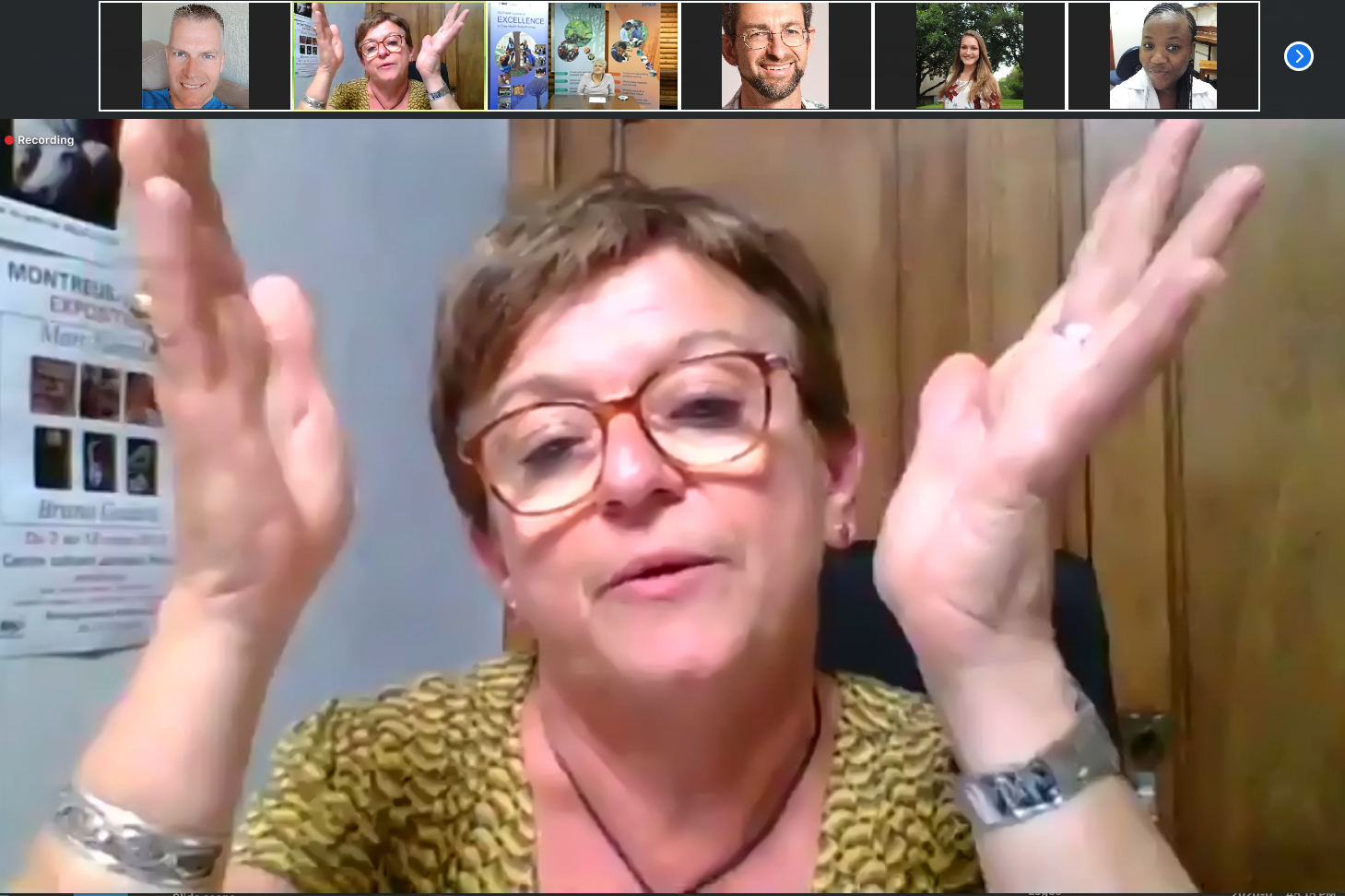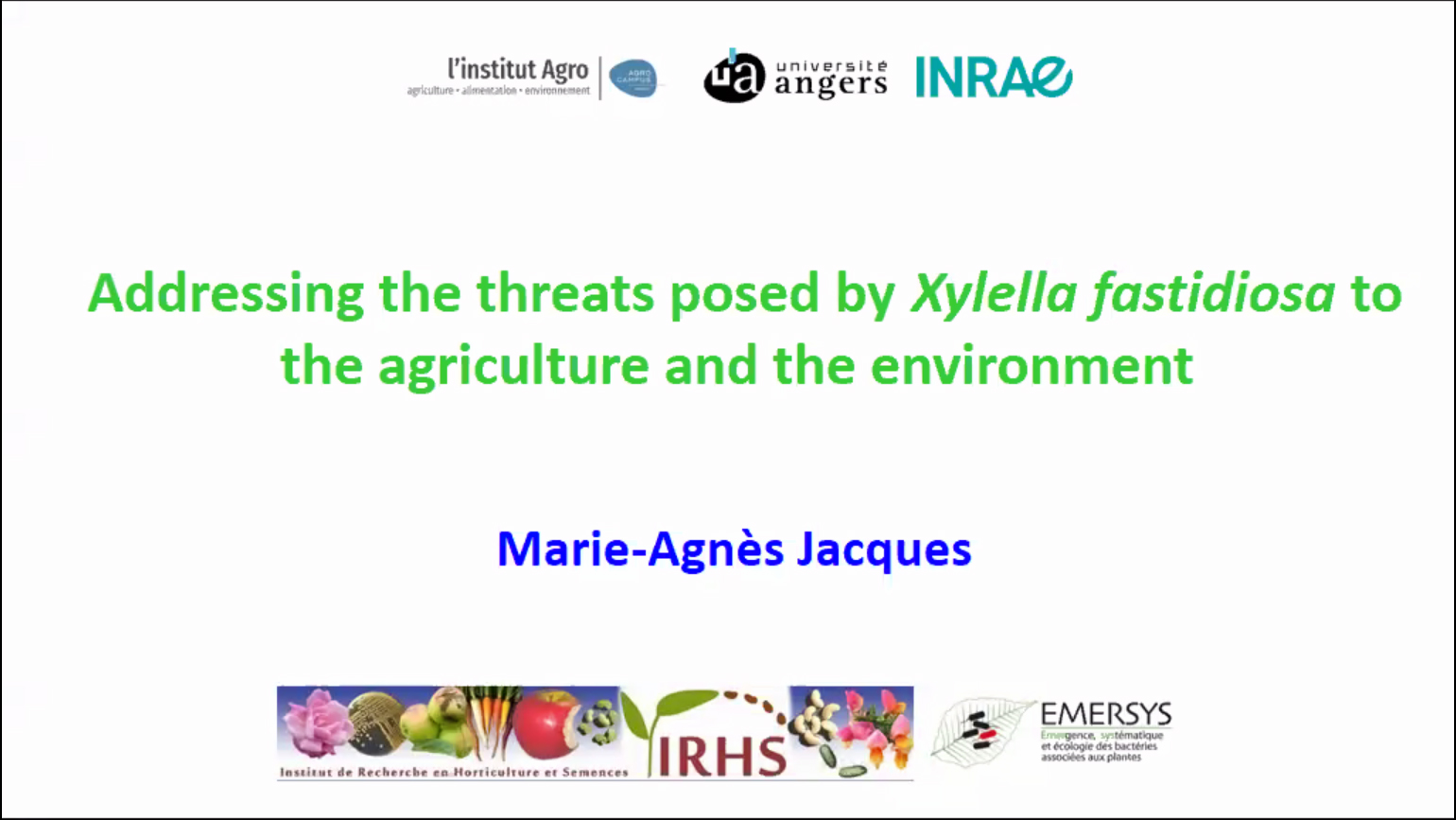The plant pathogenic bacterium Xylella fastidiosa under the spotlight at FABI’s monthly International Seminar 2020-09-02
The plant pathogenic bacterium Xylella fastidiosa is a devastating pathogen that poses a huge threat to crops and the environment. Dr Marie-Agnès Jacques, a team leader at RIHS, National Institute for Agricultural Research, in France, was the fourth guest presenter in the FABI International Seminar Series hosted online on 27 August. Her talk, entitled “Addressing the threat posed by X. fastidiosa to agriculture and the environment” focused on the progress her research group has made to improve X. fastidiosa detection and identification, understand its metabolic capacities and reconstruct its evolutionary history and introduction routes to France. Improving the detection, identification and typing of this pathogen is a key step to avoiding introductions and managing pathogen populations once it has been introduced. The movement of infected plant material and subsequent recombination had a profound effect on the bacterium’s host range and economic impact in Europe.
The bacterium was first reported in 1892 by Newton Pierre as ‘California vine disease’ but it was not isolated until 1978. It is a challenging pathogen to work with as it is very difficult to grow in vitro. It has a large host range of more than 600 plant species although significant economic losses have only been reported in a few economically-important species including grapevine, citrus, olive tree and almonds. The primary vector is sap sucking insects while infected plants and contaminated pruning tools also contribute to the spread. X. fastidiosa is a fastidious bacterium with a long generation time between infection and symptom development. It aggregates in biofilms in the xylem vessels of infected plants and results in embolism and symptoms of hydric stress. These symptoms are easily confused with drought stress symptoms. The asymptomatic incubation period may be more than three years and while there are limited tolerant genotypes there is currently no curative in-field control method.
Dr Jacques explained how comparative genomics was used to track the introduction of X. fastidiosa in France. Multiple locus variable number of tandem repeats analysis (MLVA) was used to track samples and revealed four populations in Corsica and indicated that at least two introductions had occurred. Its hypothesised these introductions were by means of the ornamental plant trade given the high occurrence in these sampled species on the island. The group also developed an improved and cheaper analysis for identifying infected plant material using sonication and CTAB DNA extraction resulting in greater sensitivity and an improved detection threshold in oak and olive species. The group also developed a multiplex qPCR assay for detecting and identifying X. fastidiosum sub-species.



